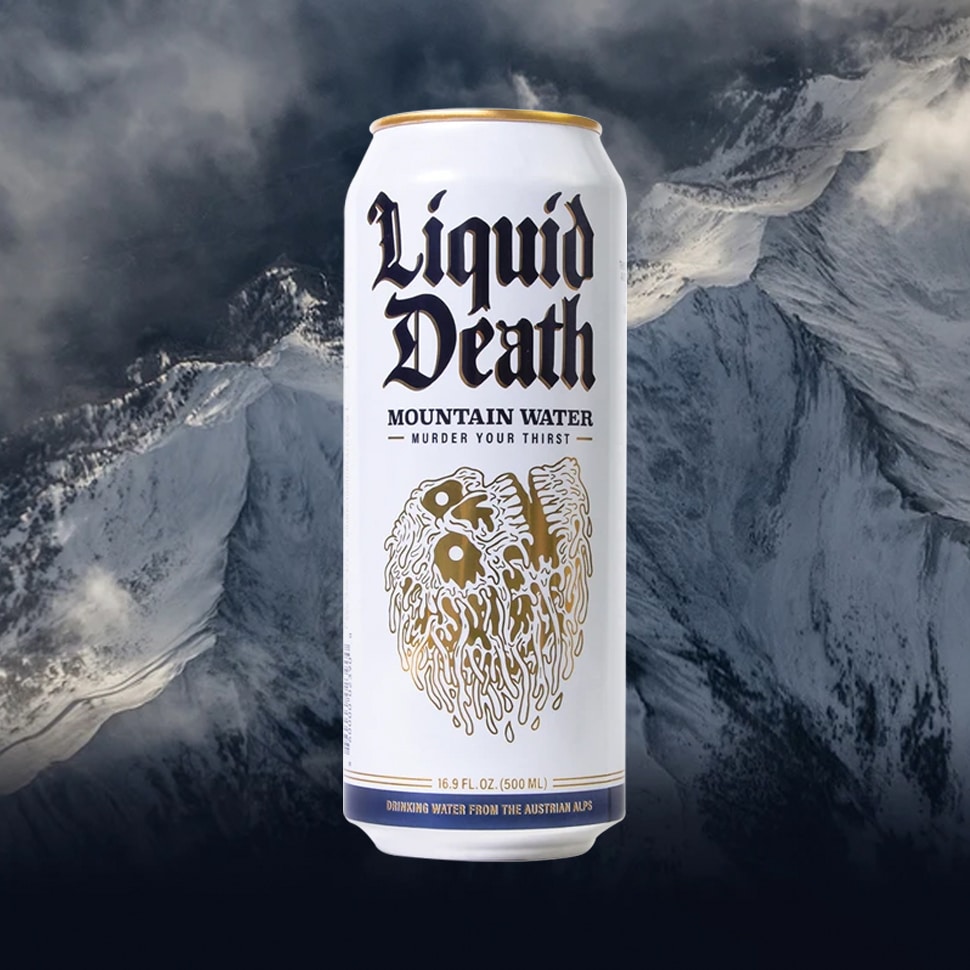Throughout human history, transporting food and water has been critical for survival. Today we have plastic water bottles, but how did this start?
- 1622 – Bottled spring water was first sold in the UK, as spring water was thought to have healing effects.
- 1783 – Carbonated water was developed.
- 1809 – Carbonated water starts taking off in the US, and is accelerated by technology innovation and disease (cholera and typhoid).
- 1973 – Polyethylene terephthalate (PET) bottles are patented, providing a cheaper material to sell carbonated and spring water.
- 1977-1981 – Commercials begin about bottled sparkling water.
- 1990s – Pepsi-Co starts distributing Aquafina, followed by Coca-Cola launching Dasani.
- Early 2000s – The war between tap and bottled water is on. Companies play on peoples’ fear of contamination.
- 2008 – Mike Cessario, founder of Liquid Death, gets the idea to create canned water after learning that rock bands prefer to drink water while performing, rather than canned energy drinks.
- 2010 – Global plastic waste was 275M tons.
- 2015 – Global plastic waste was 300M+ tons.
- 2017 – Mike Cessario launches Liquid Death, partly as a way to divert plastic water bottles from landfill, where they take 400 years to decompose.
- 2019 – Nature Climate Change publishes a study that states that global plastic production quadrupled over the past four decades, and if this trend continues, plastic manufacturing will make up 15% of greenhouse gas emissions by 2050.
- 2020 – Liquid Death raises a $9M Series A, followed by a $23M Series B.
You can see where this is going…
Meanwhile Liquid Death started as a silly idea and a marketing focused brand, there is a sustainability piece as well. Granted, drinking water from reusable water bottles is best for the environment, its aluminum cans are made out of more than 70% recycled material, making them more environmentally friendly than plastic bottles. 5 cents of every can sold is donated to help solve plastic pollution.
Similar to Tesla’s beginnings, Liquid Death has approached sustainability in a similar fashion – by focusing on the product design and the marketing. The product just so happens to be environmentally friendly.
The future is in the eyes of the innovators. The question is not about how to make a sustainable product, but how to influence consumer behavior. The more effective and faster we can change consumer behavior, the better chance we have of meeting the UN Sustainable Development Goals and preserving the Earth.
About The Author

Daniel currently works at Lawrence Livermore National Laboratory. His original assignment was to maintain and update facility safety documentation for all facilities on-site, and perform risk analysis. Over time, his role has expanded to leading continuous improvement efforts through product management.
Concurrently, Daniel volunteers with Techstars, helping organize startup weekends, and with the American Institute of Chemical Engineers, organizing events on the local and national levels of the organization. He also volunteers with One World, and previously with Powerhouse Ventures, to source and screen startups for potential investment.
Daniel holds a BS in Chemical Engineering from UC Davis, and recently completed coursework in energy innovation from Stanford. His passion is at the intersection of sustainability, innovation, and business.

